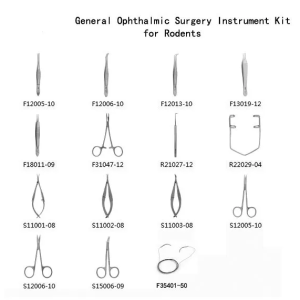$990.00 – $1,490.00
The Maze Engineers Head fixation system is utilized in neurobiological research settings to stabilize mouse head movements across various behavioral experiments. The body cover and lid system allow for easy transfer of the mouse to the system. Customizable head bars allow for versatility for stabilization and application.
These devices are frequently employed in the study of anaesthesia effects, facial function, neuroimaging, reflex adaptation, operant conditioning, and behaviors such as eye blinking in mice (Schwarz et al., 2010).

MazeEngineers offers custom-built behavioral mazes at no extra cost—designed to fit your exact research needs. Eliminate reproducibility issues from poor sizing or lingering scent cues with precision-engineered, modular, and smart mazes that adapt in real time to animal behavior. Publish new protocols, run adaptive experiments, and push the boundaries of behavioral science.



Mouse Head fixation system Features | |
Body cover and lid: 102mm L x 34 mm W x 38.5 mm H | |
Head plate default (customizable upon request): Skull plate window 6 mm W x 6 mm L, Overall default dimensions: 15.8 mm L x 24mm W |

Head fixation serves as a fundamental procedure in neurological research. Its primary role is to immobilize subjects, thereby facilitating optical assessment of neuronal circuits and reducing background noise and motion artifacts. The head fixation system limits the range of behavioral movements, crucial for studying learning behaviors related to reward and specific motor skills such as eye movements, lever pulling, licking, and engaging in virtual reality scenarios (Weaver et al., 2023).
Moreover, head fixation devices are extensively utilized in neuroscience laboratories for recording neuronal activity through techniques such as calcium imaging and electrophysiology.
The process of head fixation is essential as it influences head and eye movements in response to visual stimuli. Beyond motor reflex studies, head fixation devices are instrumental in training mice for operant conditioning tasks and facilitating differentiation between auditory, visual, and olfactory stimuli.
To implement head fixation, the head bar must be securely attached to the animal’s head, followed by immobilization of the head bar and the subject’s head using an external apparatus. A head hat is also used to protect hardware mounted on the skull.
The head fixation system features a metal restrainer platform and removeable lid, allowing for easy movement of the subject. This restrainer ensures superior stability and comfort for the subject throughout the experiment. Thumbscrews allow easy capture and release of the animal.
The default aluminum headplate has a 6 mm x 6 mm skull window and is fixed with M2.5 cross countersunk screws.
Customizations include material composition and dimensions, please enquire
Mazeengineers provide an ergonomically designed head fixation system tailored to research needs.
The following can be studied using the Rodent Head-Fixation apparatus:
A head fixation system is employed in neurobiology laboratories to affix mouse heads during several behavioral paradigms.
Guo, Z. V., Hires, S. A., Li, N., O’Connor, D. H., Komiyama, T., Ophir, E., … & Svoboda, K. (2014). Procedures for Behavioral Experiments in Head-Fixed Mice. PLoS ONE, 9(2).
Hughes, R. N., Bakhurin, K. I., Barter, J. W., Zhang, J., & Yin, H. H. (2020). A head-fixation system for continuous monitoring of force generated during behavior. Frontiers in integrative neuroscience, 14, 11.
Schwarz, C., Hentschke, H., Butovas, S., Haiss, F., Stüttgen, M. C., Gerdjikov, T. V., … & Waiblinger, C. (2010). The head-fixed behaving rat—procedures and pitfalls. Somatosensory & motor research, 27(4), 131-148.
Weaver, I. A., Yousefzadeh, S. A., & Tadross, M. R. (2023). An open-source head-fixation and implant-protection system for mice. HardwareX, 13, e00391.
| Dimensions | N/A |
|---|---|
| Species | Mouse, Rat |
There are no questions yet. Be the first to ask a question about this product.
Monday – Friday
9 AM – 5 PM EST
DISCLAIMER: ConductScience and affiliate products are NOT designed for human consumption, testing, or clinical utilization. They are designed for pre-clinical utilization only. Customers purchasing apparatus for the purposes of scientific research or veterinary care affirm adherence to applicable regulatory bodies for the country in which their research or care is conducted.